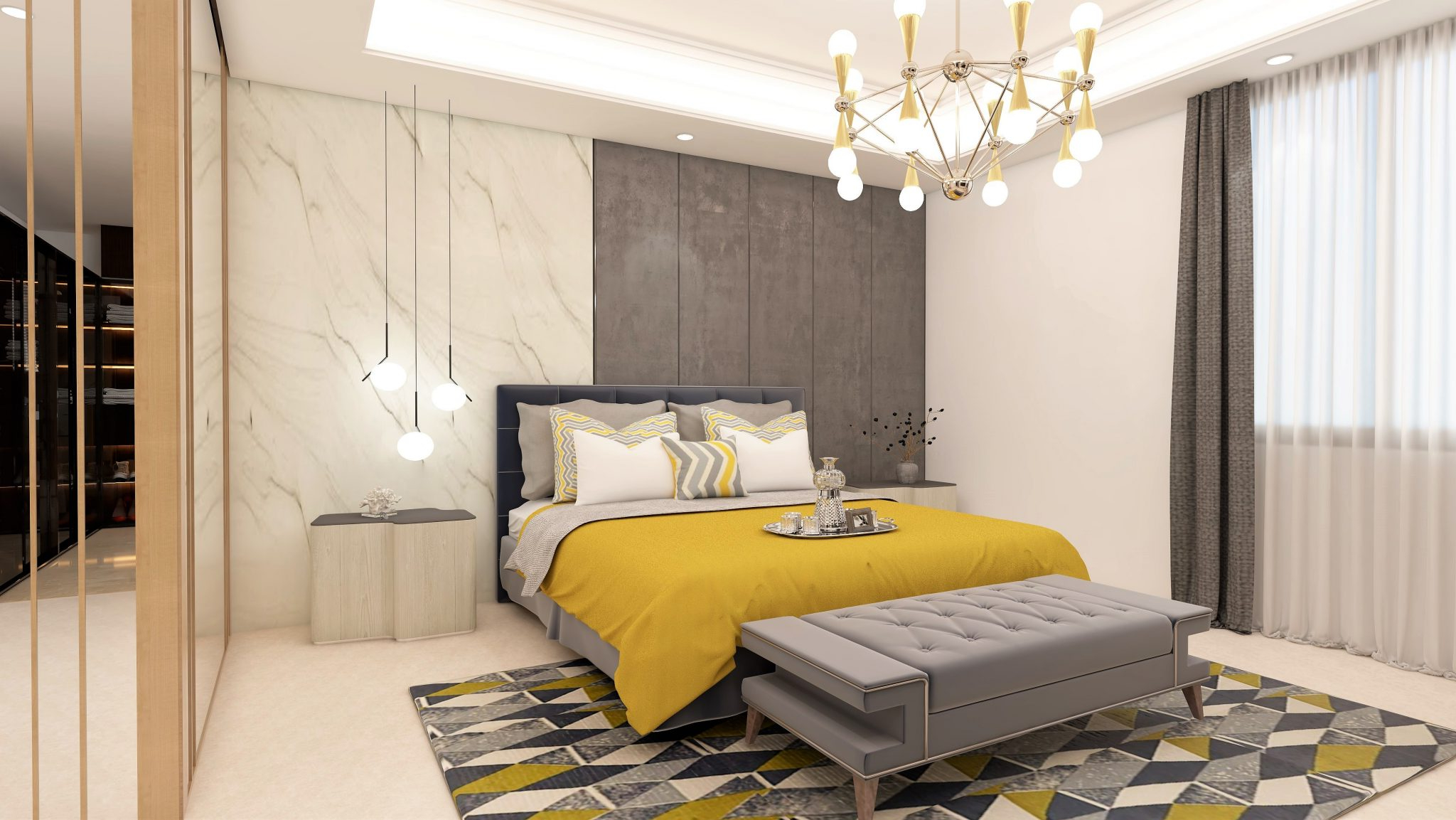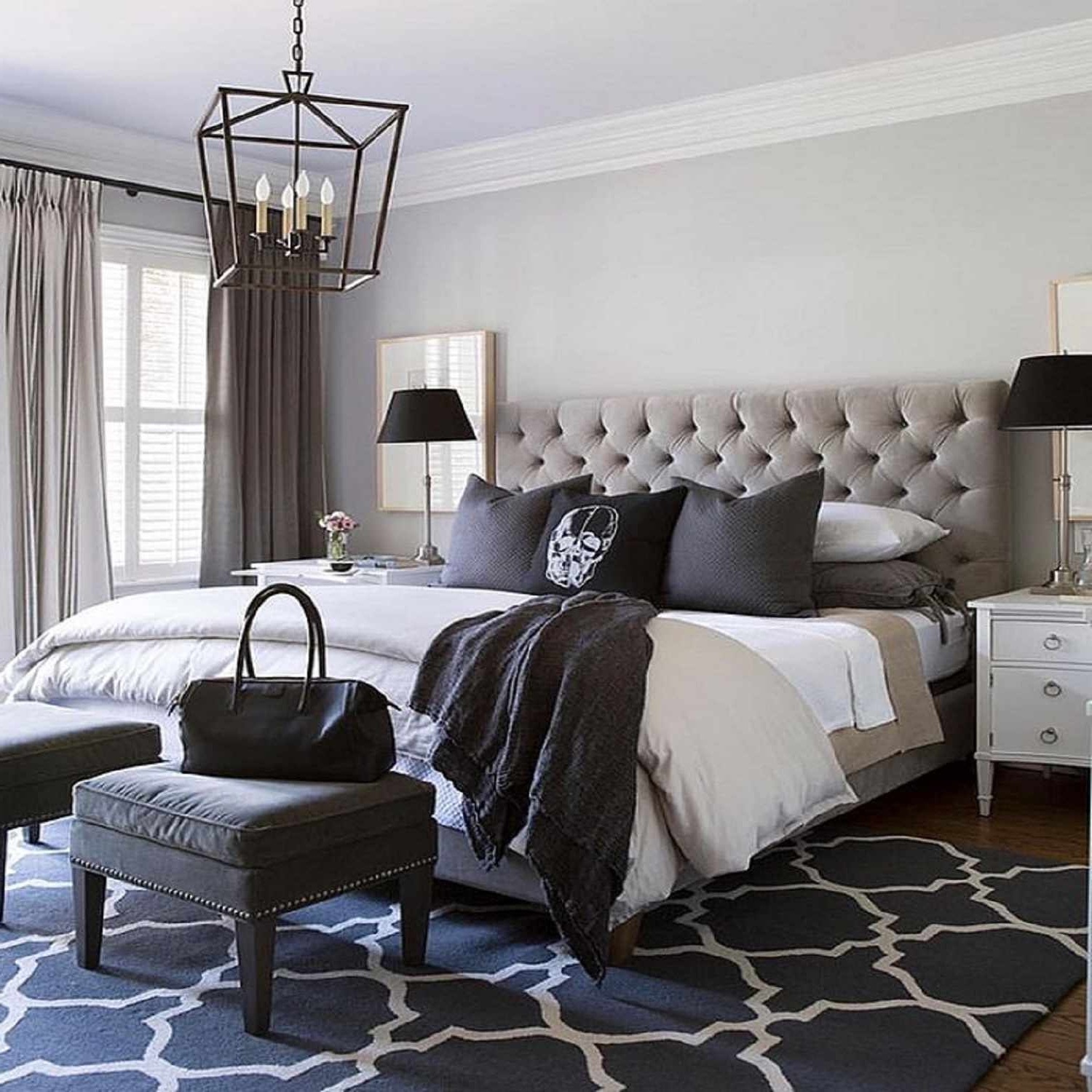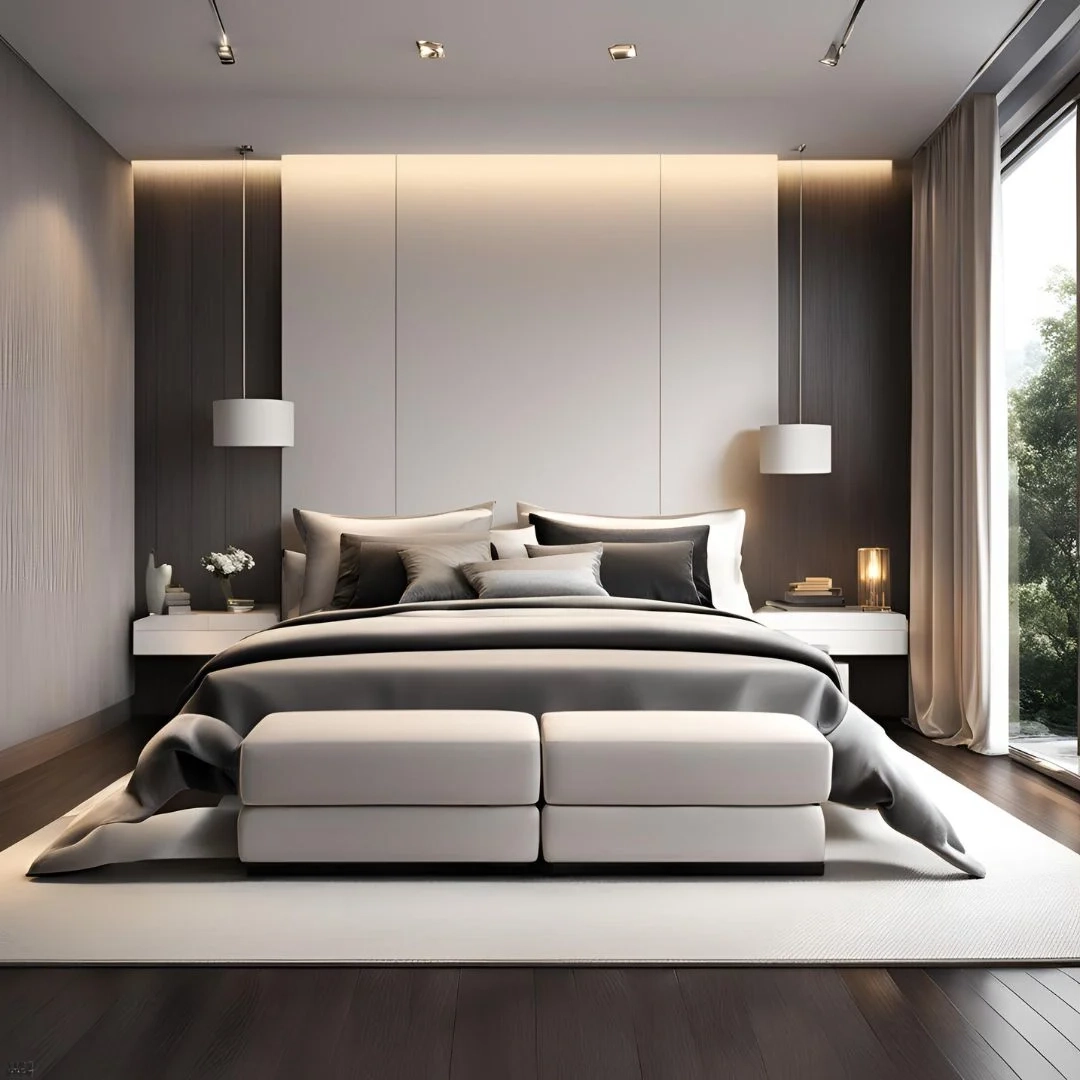Every night, we spend roughly one-third of our lives in bed – so why not make it count? Your master bedroom should feel like a retreat from the world’s chaos. It’s not just about having a comfortable mattress or nice sheets. The right design choices can dramatically impact how well you sleep, how quickly you fall asleep, and how rested you wake up. Whether you’re starting fresh with a new space or revamping your current setup, these simple yet powerful tips will help you craft the perfect sleep sanctuary.
Think about the last time you had truly restorative sleep. What did your bedroom look like? Was it dark, quiet, and cool? Did it feel like a place where you could completely let go? The truth is, your bedroom environment plays a massive role in how your body and mind recover from the day’s stressors. We often overlook how important the physical space is when it comes to quality sleep. But when we get it right, your master bedroom becomes more than just a room – it transforms into a haven where your body naturally wants to drift off to dreamland. This guide isn’t about expensive renovations or designer furniture. Instead, it’s about thoughtful choices that anyone can implement to improve their sleep experience. From lighting to color choices, from temperature control to clutter reduction, every element matters. The goal is to create a space that supports your natural sleep rhythms while feeling personally comforting and inviting.
The Power of Light Control
Light is one of the most crucial factors in setting up your sleep sanctuary. Our bodies rely heavily on light to regulate our circadian rhythms – essentially telling us when it’s time to be alert and when it’s time to wind down. During the day, bright light exposure helps keep us awake and alert. But as evening approaches, dimming lights signals to our brains that it’s time to prepare for rest. Consider installing dimmer switches on your main lighting fixtures. They allow you to gradually reduce brightness as bedtime approaches. You might also want to add bedside lamps with warm, soft glow rather than harsh overhead lighting. For those who struggle with getting to sleep, blackout curtains or eye masks can make all the difference. These simple changes can help your body recognize when it’s time to shift gears from daily hustle to nighttime relaxation. Some people even use blue light filters on their devices after dinner, since screens emit light that can interfere with melatonin production. Think about how much better you’d sleep if your room was always perfectly dark and cozy when you’re ready for bed. The right lighting setup creates a visual cue that your brain will come to trust over time.
Temperature and Ventilation Essentials
Your bedroom temperature can make or break your ability to fall asleep and stay asleep. Research shows that the ideal sleeping temperature ranges between 65-68°F (18-20°C). If your room feels too hot, your body struggles to cool down, which makes it harder to drift off. Conversely, if it’s too cold, you’ll find yourself tossing and turning trying to get comfortable. Start by checking your thermostat settings and consider investing in a programmable one. Set it to cool your room slightly before bedtime, then maintain that temperature throughout the night. Good air circulation is also vital. Open windows when possible, especially during cooler evening hours. If that’s not feasible, a small fan can help create airflow that aids in heat dissipation. Choose breathable bedding materials like cotton or bamboo fibers, which naturally regulate temperature better than synthetic options. Don’t forget about ventilation in your bedroom – ensure there’s adequate airflow to prevent stuffiness. Some people find that using a humidifier in dry climates or a dehumidifier in overly humid conditions helps maintain optimal comfort levels. When everything is just right, you won’t have to fight the elements to get a good night’s rest. The key is finding that sweet spot where you’re neither sweating nor shivering.
Choosing the Right Bed and Bedding
The bed is the centerpiece of any sleep sanctuary, so choosing the right one matters enormously. Your mattress should support your body properly, whether you sleep on your back, side, or stomach. A good rule of thumb is that your spine should remain aligned when lying down. If you’re experiencing back pain or discomfort upon waking, it might be time to evaluate your mattress. Memory foam mattresses offer excellent pressure relief, while innerspring models provide more bounce and airflow. Don’t overlook the importance of pillows either – they should match your sleeping position and support your neck properly. For example, side sleepers often benefit from thicker pillows that fill the gap between the ear and shoulder. As for bedding, choose fabrics that feel soft against your skin and breathe well. Cotton is a popular choice because it’s naturally cooling and hypoallergenic. Bamboo fiber bedding offers similar benefits with added moisture-wicking properties. Consider investing in a quality duvet cover and pillowcases that are easy to wash and maintain. The right bedding doesn’t have to be expensive – focus on materials that feel comfortable to you personally. A cozy blanket or throw can add warmth without overheating. Remember, your bed should feel like a safe place where your body naturally wants to relax and rest.
Decluttering for Better Sleep
A cluttered bedroom can create mental chaos, making it harder to relax and fall asleep. Studies suggest that visual clutter increases stress levels and makes it more difficult to achieve a calm state of mind necessary for sleep. Start by removing anything unnecessary from your bedroom. That includes clothes, books, papers, and personal items that don’t belong in your sleeping space. Keep a designated area for items you need near your bed, such as a small nightstand or drawer. But try to limit what sits directly on your nightstand to essentials only – maybe a lamp, a book, and perhaps a glass of water. The idea isn’t to strip your room completely bare, but rather to create intentional spaces that promote calmness. Storage solutions like under-bed containers or closet organizers can help keep things tucked away. If you’re someone who reads before sleep, consider keeping reading materials in another part of your home. This separation helps signal to your brain that your bedroom is purely for rest and recovery. When you enter your bedroom, it should immediately feel like a sanctuary – not a place where you’re reminded of unfinished tasks or daily concerns. The less visual stimulation, the easier it is to quiet your mind and drift off peacefully.
Sound Management Strategies
Noise pollution can be one of the biggest disruptors to good sleep. Even subtle sounds like traffic, neighbors, or household appliances can interfere with your ability to fall and stay asleep. If you live in a busy neighborhood or share walls with others, sound management becomes even more critical. White noise machines are incredibly effective at masking irregular sounds. They produce consistent, soothing frequencies that help drown out disruptive noises. Alternatively, nature sounds like rainfall, ocean waves, or gentle forest sounds can be relaxing alternatives. For those who prefer silence, earplugs or noise-canceling headphones can work wonders. Some people find that playing soft instrumental music or classical pieces helps them fall asleep more easily. However, keep volume levels low and avoid anything too stimulating. Soundproofing treatments, such as heavy curtains or acoustic panels, can also help reduce external noise. If you’re prone to waking up due to sudden sounds, consider placing your bed away from windows or noisy areas of the house. Creating a consistent auditory environment allows your nervous system to settle into a deeper state of relaxation. Sometimes, the best solution is simply creating a quiet zone where you know you can rest undisturbed.
Personal Touches and Mood Setting
While functionality is important, don’t forget about the emotional aspects of your sleep sanctuary. Your bedroom should feel uniquely yours – a space that brings comfort and joy. Add personal touches that make you smile when you see them. Maybe it’s a favorite photograph, a collection of meaningful objects, or a plant that brings life to the room. These elements create positive associations with your sleeping space. Soft textures like plush rugs, cozy throws, or silk pillowcases can enhance the sensory experience. Consider adding some ambient lighting like string lights or candles (safely) to create a warm atmosphere. Plants aren’t just decorative – they improve air quality and add a sense of serenity. Lavender is particularly popular for its calming scent, though any pleasant fragrance can work. Some people enjoy diffusing essential oils like chamomile or sandalwood to promote relaxation. The goal isn’t to make your room look like a magazine spread, but rather to ensure that everything in your space contributes to your peace of mind. When you feel good about your surroundings, it shows in the quality of your sleep. Personalization helps transform a functional bedroom into a deeply restorative sanctuary.
Simple Maintenance Habits
Creating a perfect sleep sanctuary is just the beginning – maintaining it consistently is what keeps it effective. Regular cleaning helps keep allergens and dust from accumulating, which can affect breathing and sleep quality. Wash your bedding weekly, especially pillowcases and sheets, to remove oils and dead skin cells that build up over time. Vacuum or sweep floors regularly, paying attention to corners where dust tends to collect. Keep your bathroom connected to your bedroom clean, as cleanliness affects your overall environment. Check that your bed linens are still comfortable and replace them when they start to feel rough or worn. Update your sleep routine based on seasonal changes – perhaps adjusting your bedding weight or adding a humidifier during dry months. Keep a small supply of replacement items like extra pillowcases or tissues handy. Consider doing a quick room check each morning to ensure everything is tidy and ready for the next night. These simple habits prevent small issues from becoming bigger problems and help maintain the peaceful vibe you’ve worked so hard to establish. A well-maintained space reflects the care you put into your sleep health.
Transforming your master bedroom into a true sleep sanctuary doesn’t require a complete overhaul or huge financial investment. It’s about making smart, intentional choices that align with your body’s natural rhythms and your personal preferences. From managing light and temperature to selecting the right bedding and minimizing distractions, every detail plays a role in how well you sleep. Remember, your bedroom is your personal retreat – it should feel like a place where you can fully let go of the day’s stresses. Start with one or two changes that feel manageable, then gradually build upon them. Whether it’s adding blackout curtains, investing in better pillows, or simply decluttering a corner of your room, each step moves you closer to better sleep. The journey toward perfect sleep doesn’t have to be complicated. It’s about creating a space that supports your body’s needs while reflecting your personality and comfort preferences. When you approach this process with patience and consistency, you’ll notice the difference in how you feel both during the day and when you finally settle into bed at night. Your perfect sleep sanctuary awaits.















